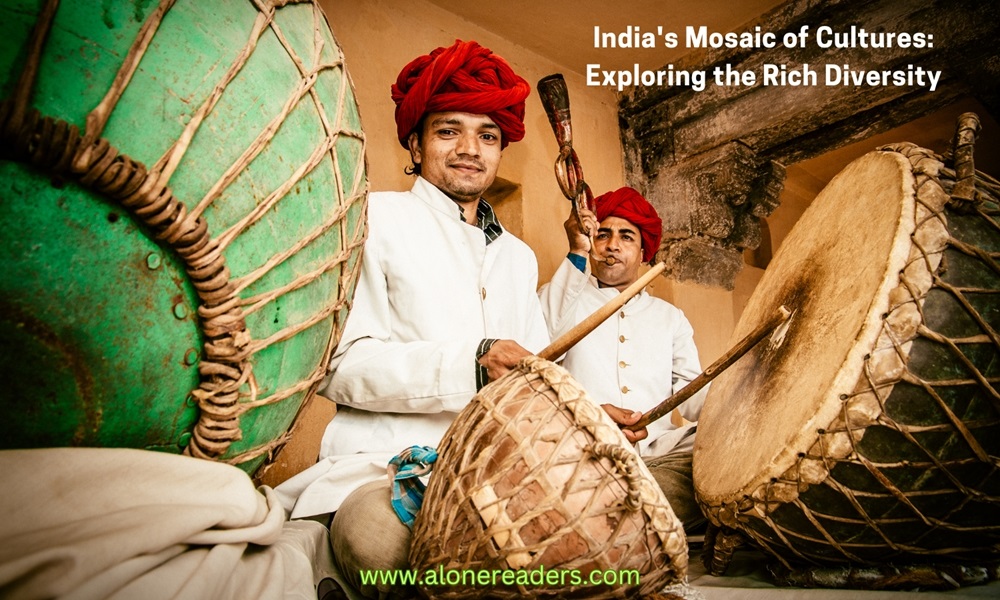
India, often referred to as the land of unity in diversity, presents a complex and colorful tapestry of cultures. This diversity is not a recent phenomenon. It has been nurtured and preserved over thousands of years, creating a unique melange of languages, religions, traditions, and practices.
India does not have a national language, but Hindi and English are the official languages. The constitution of India recognizes 22 languages under the Eighth Schedule. However, over 19,500 dialects and languages are spoken across the country. Each state and region has its own linguistic heritage, contributing to the country’s rich linguistic diversity. This multilingual environment is a testament to India's cultural mosaic.
India is the birthplace of Hinduism, Buddhism, Jainism, and Sikhism, known as the Indian religions. Apart from these, it is home to significant populations of Muslims, Christians, Zoroastrians, Jews, and others. Each religion brings its own set of festivals, rituals, and customs, contributing to the country’s vibrant cultural landscape. For example, Diwali, Eid, Christmas, and Vaisakhi are celebrated with great enthusiasm, showcasing India’s secular fabric.
India’s festivals are a splendid display of its cultural richness. From the color splash of Holi to the lights of Diwali, the fervor of Eid to the pomp of Christmas, each festival is celebrated with zeal irrespective of religious and cultural backgrounds. These festivals not only mark the seasons and historical events but also bring people together, fostering a sense of unity and shared joy.
The Indian cuisine is as diverse as its cultures. Every region in India has its own unique cuisine, which is influenced by its history, climate, and cultural groups. North Indian food is known for its rich gravies and rotis, while South Indian cuisine is famous for its rice-based dishes. Spices, which are a staple in Indian cooking, vary greatly across different regions, adding to the diversity of flavors.
Indian traditional attire changes from region to region. In the north, you might see women in salwar kameez or lehenga-cholis and men in kurta-pajamas. In the south, the sari and dhoti are more common. The materials, designs, and styles of these garments are deeply rooted in the local culture and climate, making them unique to each region.
India’s art and craft sector reflects its cultural diversity. From Kashmiri Pashmina shawls to Rajasthani miniature paintings, from Bengali terracotta work to South Indian bronze sculptures, each art form represents the history and culture of its region. These crafts are not just art pieces; they are a testament to the country's rich heritage and the skills of its artisans.
The diversity in Indian music and dance forms is astounding. Classical music includes two major traditions: the North Indian Hindustani and the South Indian Carnatic music. Similarly, dance forms vary from Bharatanatyam in the South to Kathak in the North, each telling stories and myths of their region.
Traditional sports and games in India also reflect its cultural diversity. From kabaddi in the north to boat races in the south, these games are more than just pastimes; they are an integral part of cultural celebrations and communal gatherings.
India’s cultural heritage sites, such as the Taj Mahal, Hampi, and the Ajanta and Ellora Caves, showcase the architectural brilliance and historical depth of Indian cultures. These sites are not just tourist destinations; they are symbols of India's rich and diverse historical legacy.
India's cultural diversity is its strength and identity. This diversity is evident in every aspect of Indian life, from languages to festivals, cuisine to attire, and art to sports. It is this diversity that makes India a fascinating country to explore and understand. The mosaic of Indian cultures is a vibrant illustration of coexistence and harmony, making India a unique country in the world.